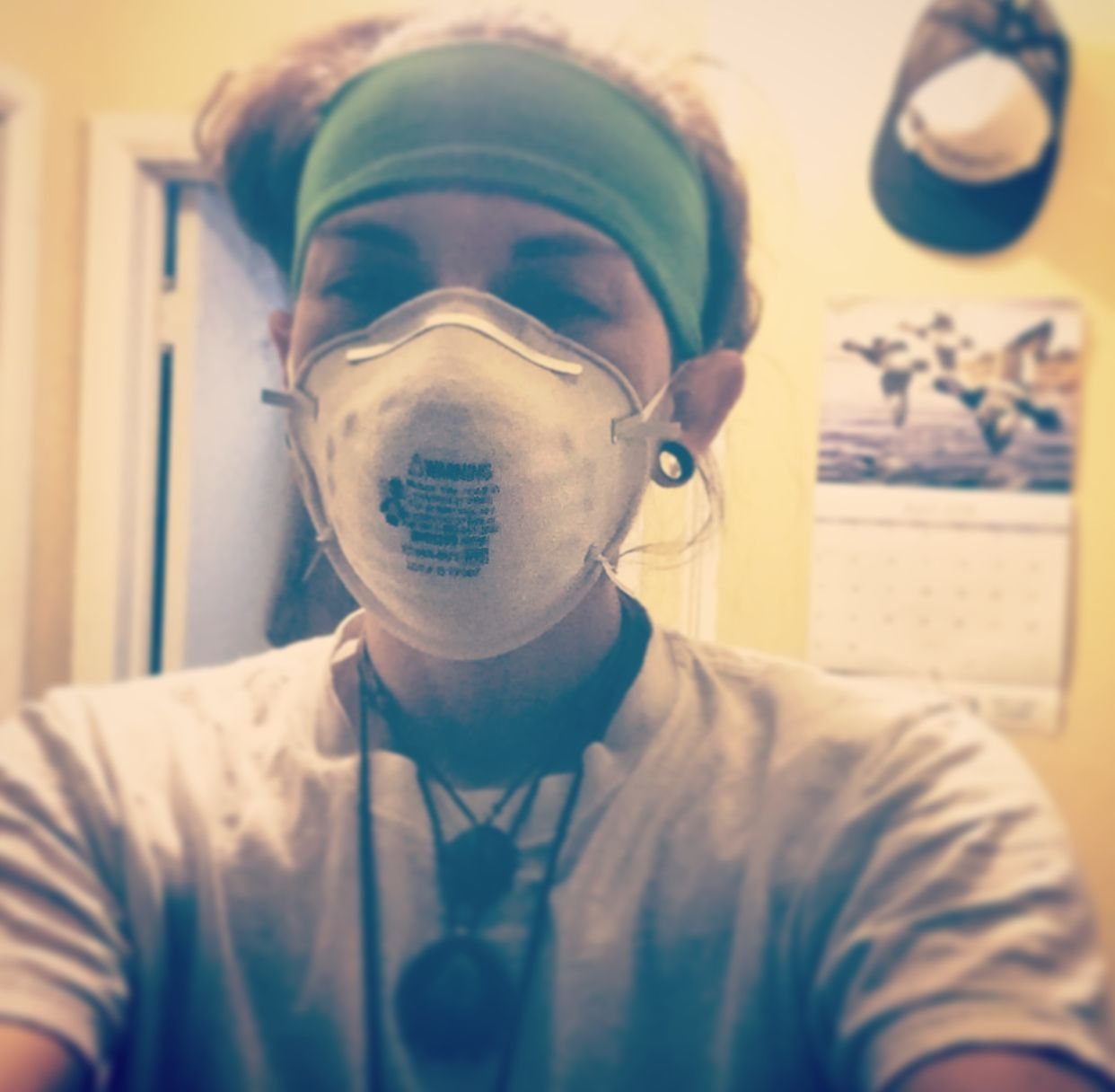
I’ve been posting recently on my DIY urban composting experiment in a city which does not allow me to have traditional compost piles or bins...so I made my own composter/digester out of two five-gallon buckets that I acquired for free, and you can read about that here and how to make your own, as well.
After dealing with crazy Missouri weather, I also posted about the journey of moving the compost from outside (which was the plan) to inside (because it got cold af outside).
A (timely) Revelation
The Scientist knows about this stuff a lot more innately than I do...or maybe she just has years more studying under her belt and real botany classes in college...but something I didn’t even think about having the compost inside:
...drum roll please
THE POSSIBILITY OF MOLD SPORES GETTING CLOSE TO MY MICROBABIES!
[Remember when I said I moved the compost inside next to where I keep my micros?] Well, even though that sounded like a good idea, I realized that while things don’t look moldy and nasty in there (super healthy, actually), that my (very sensitive) allergy to spores in the air became apparent, and I realized that while I might store the buckets inside, I’m definitely not going to want to store it next to the plants. I’m actually going to wear a protective facial mask 😷 when I stir this bad boy up from now on...as you’ll see fashionably modeled by me in photos below. Bahaha.

As an experiment, for the past couple of days (I’ve only been stirring every 48 hours...), I actually went ahead (out of paranoia from contaminating a fuckload of new microgreens I had set out) and moved the composter outside. The weather has been cold at night and not that warm during the day, so for as far as “Midwest-regular” temperatures, as I’m writing this (before I go out and stir this thing up), my questions are related to...obviously, the heat that is hopefully continuing to be created within the mix. Also, it has rained a little bit so I know the mix will be more more moist than it was last time I visited it, so I will be interested in what I see when I “pop the top” on the digester and see where we are in the composting process.
I’ve been gong though a bit more paper towels than usual (does anyone know if they work well in compost)?, and one of the best “browns” that are able to fulfill that 3:1 green-to-brown material ratio, so I’ve been spending a lot of time ripping up paper towel rolls. Hoping to eliminate that completely soon. We went with roll-less toilet paper a while back and haven’t been disappointed.
Okay, I’m going to do the work now, document and be right back!
...waiting
...waiting
...wating
The Results!

This looked pretty good, although I could tell the heat that was being generated inside was not being generated outside. While I could definitely tell decay was happening and could pick out humus being created in the mix. Very exciting. I attempted again to stir with a stick, but decided (once more) that getting in there with your hands is the best method. Just take off your rings and if you have a fabric-based watch band of any variety—be prepared to replace that quickly or take it off before digging it.

I also noticed that the top lid did contain condensation, so this is also a plus.
I went ahead and first laid down a layer of the dry, torn up paper towel roll into the basic mix before I mixed and subsequently added more brown material.
This was after the first good turn. I’ve noticed about the rumors of rinds (like from my delicious spaghetti squash, and onion skins take a bit longer to compost, this is true. I have been making effort to break down the pieces every time I turn the compost, and I do notice they’re holding heat, so I know they’re breaking down, however taking a bit longer.

I had collected a full bunch of goodies to add to the compost bucket, so I was excited to get that going. In this bunch are soil bunches with roots from microgreens, carrots, and some tomatoes that had slipped out into the sink drain before I could save them..along with our regular regimen of regularly adding coffee grounds as well.

In maintaining that important 3:1 ratio of “brown” (carbon), and “green” (nitrogen) delivering organic products, I make sure to break up leaves really well from a pile that The Scientist has constructed for me. I have nice access to wetter, breaking down leaves in the pile, as well as leaves that are nice and dry and easy to crush up to add a nice mix into my slightly wetter-than necessary bucket.


Here’s what it looks like now, right after I closed it back up and sat it in the sun (new experiment since it’s relatively nice outside), so I’m hoping the temperature picks back up inside the bucket and the digesting gets rocking and rolling full-speed again.
Would love to hear your urban composting tips, tricks and methods!
Thank you for taking the time to check out my blog, and I hope you find it helpful!

COMMUNITY IS THE NEW MONEY

Community Forums








